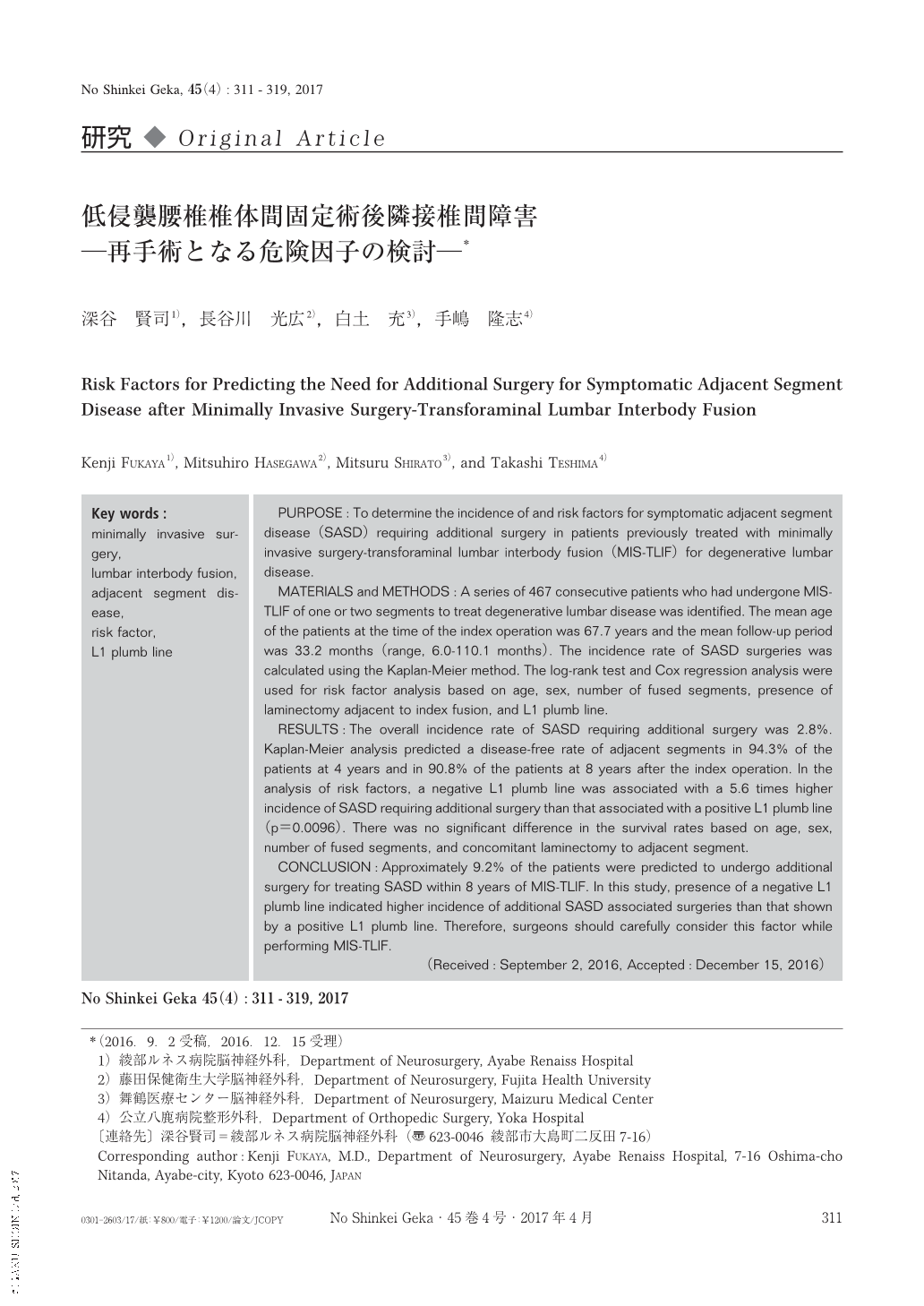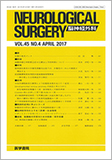Japanese
English
- 有料閲覧
- Abstract 文献概要
- 1ページ目 Look Inside
- 参考文献 Reference
Ⅰ.はじめに
従来の腰椎後方固定術の問題点として,fusion diseaseと呼ばれる術後長期に遺残する腰部愁訴があり,椎弓根スクリュー挿入や骨移植母床確保のための広範囲な側方展開,圧排による筋阻血,後枝内側枝損傷による脱神経,手術操作に伴う直接的な筋挫傷などが原因とされる15).経皮的椎弓根スクリュー(percutaneous pedicle screw:PPS)を用いた低侵襲腰椎椎体間固定術(minimally invasive surgery-transforaminal lumbar interbody fusion:MIS-TLIF)は傍脊柱筋損傷を最小限とすることを目的の1つとしており,広く普及しつつある2).一方,腰椎固定術の術後合併症に隣接椎間障害(adjacent segment disease:ASD)があり,再手術となることも稀ではない.今回われわれはMIS-TLIF施行後,ASDによる再手術が必要となる頻度ならびに危険因子について検討したので報告する.
PURPOSE:To determine the incidence of and risk factors for symptomatic adjacent segment disease(SASD)requiring additional surgery in patients previously treated with minimally invasive surgery-transforaminal lumbar interbody fusion(MIS-TLIF)for degenerative lumbar disease.
MATERIALS and METHODS:A series of 467 consecutive patients who had undergone MIS-TLIF of one or two segments to treat degenerative lumbar disease was identified. The mean age of the patients at the time of the index operation was 67.7 years and the mean follow-up period was 33.2 months(range, 6.0-110.1 months). The incidence rate of SASD surgeries was calculated using the Kaplan-Meier method. The log-rank test and Cox regression analysis were used for risk factor analysis based on age, sex, number of fused segments, presence of laminectomy adjacent to index fusion, and L1 plumb line.
RESULTS:The overall incidence rate of SASD requiring additional surgery was 2.8%. Kaplan-Meier analysis predicted a disease-free rate of adjacent segments in 94.3% of the patients at 4 years and in 90.8% of the patients at 8 years after the index operation. In the analysis of risk factors, a negative L1 plumb line was associated with a 5.6 times higher incidence of SASD requiring additional surgery than that associated with a positive L1 plumb line(p=0.0096). There was no significant difference in the survival rates based on age, sex, number of fused segments, and concomitant laminectomy to adjacent segment.
CONCLUSION:Approximately 9.2% of the patients were predicted to undergo additional surgery for treating SASD within 8 years of MIS-TLIF. In this study, presence of a negative L1 plumb line indicated higher incidence of additional SASD associated surgeries than that shown by a positive L1 plumb line. Therefore, surgeons should carefully consider this factor while performing MIS-TLIF.

Copyright © 2017, Igaku-Shoin Ltd. All rights reserved.


